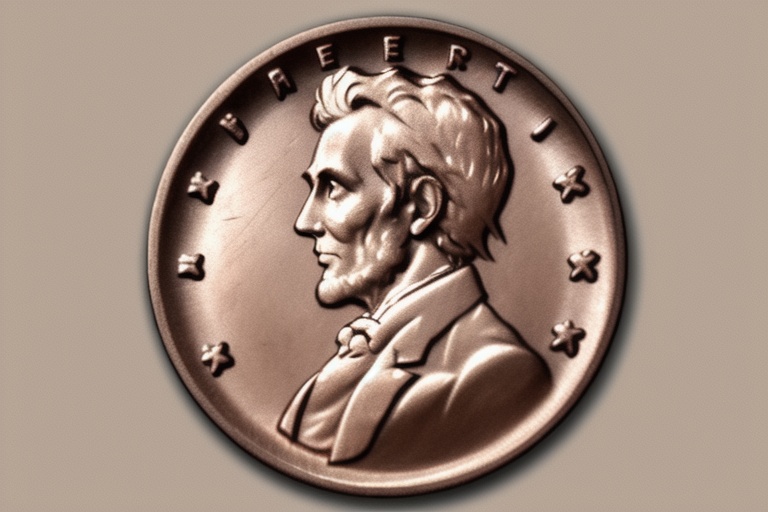Jersey coins represent a unique frontier in the numismatic world, offering both beauty and rich historical significance. These coins encapsulate pivotal moments in Jersey's history, imbuing each piece with intrinsic cultural value that is sought after by collectors and investors alike. This comprehensive guide is tailored to assist individuals in enhancing their understanding of the different aspects of Jersey coinage, encompassing historical insights, value determination, and the thrill of collecting these treasured pieces.
Jersey coins represent a unique frontier in the numismatic world, offering both beauty and rich historical significance. These coins encapsulate pivotal moments in Jersey's history, imbuing each piece with intrinsic cultural value that is sought after by collectors and investors alike. This comprehensive guide is tailored to assist individuals in enhancing their understanding of the different aspects of Jersey coinage, encompassing historical insights, value determination, and the thrill of collecting these treasured pieces.
The Earliest Coins of Jersey
Jersey's numismatic journey began with coins like the 1/26 shilling KM#2, crafted from copper and issued during various years such as 1841, 1844, and 1861. These early examples of coinage are not just monetary instruments but are narratives of the island's past, holding a special seat at the table of history. Today, these coins can still be found and purchased, reminding us of the ever-evolving nature of currency and trade.
Following this, the copper 1/13 shilling KM#3 appeared, spanning similar production years. These coins echo the same historical resonance, offering collectors a tangible connection to the 19th century and a piece of Jersey's numismatic legacy.
The Introduction of Bronze Coins
As the materials evolved, so did the coins. Jersey introduced bronze coinage in the form of the 1/26 shilling KM#4 and the 1/13 shilling KM#5 during the late 1860s and early 1870s. The transition to bronze added a new dimension to the artistry and durability of the coins, strengthening their appeal in the marketplace.
Other examples in this category include the 1/24 shilling KM#7 and 1/12 shilling KM#10. Each of these coins stands as a testament to the minting skills of the era and provides collectors with a broader scope of Jersey's numismatic offerings.
The Jersey Coins of the Early 20th Century
As the 20th century dawned, new coins like the 1/24 shilling KM#11 and 1/12 shilling KM#12 made their debut. Produced in the years around the First World War, these coins offer insights into the period's economic and social climate. They are readily available for collection today and can be found in various states of preservation, affecting their market value.
The bronze coins 1/24 shilling KM#13 and 1/12 shilling KM#14, minted in the 1920s, illustrate Jersey's continuous numismatic tradition, providing a segue into the coins of the 1930s—such as the 1/24 shilling KM#15 and the 1/12 shilling KM#16—which displayed enhanced artistic intricacies.
Post-World War II coins like the bronze 1/12 shilling KM#18 and 1/12 shilling (Release) KM#19 & KM#20 are imbued with the historical backdrop of their era, becoming a part of Jersey's recovering identity after the turmoil of the war.
The Emergence of Modern Coinage
As we move towards the mid-century, we encounter coins like the 1/12 shilling KM#21 and the 1/4 shilling KM#22. These nickel-brass coins showcase the island's more recent economic developments and are characterized by their sturdy composition and modern designs.
Then come special commemorative issues like the 1/12 shilling (300th Anniversary of the Accession of Charles II) KM#23 and the 1/4 shilling, both of which celebrate historic milestones and are eagerly collected for their unique narratives encapsulated in metal.
In the 1960s, the 1/4 shilling KM#25 and the 1/12 shilling (900th Anniversary of the Battle of Hastings) KM#26 burst onto the scene, registering in coinage Jersey's progressive steps through time. These, along with the larger denomination 5 shillings KM#28, give an indication of the socio-economic shifts of the island.
The Modern Decimalization Impact
With decimalization, new denominations like the 1/2 new penny KM#29 and the 1 new penny KM#30 emerged in the 1970s, marking a significant shift in Jersey's monetary system. The bronze 2 new pence KM#31 and copper-nickel 5 new pence KM#32 reflect the adaptations of Jersey's monetary policies to international standards.
Upper denomination coins like the 10 new pence KM#33 further underscore the island's financial evolution and serve as signposts of the economic landscape of the latter part of the 20th century.
Rarity, Condition, and Value
The appeal of Jersey coins is multifold, but one particularly attractive aspect is their rarity. Limited mintage means that certain coins are hard to come by, thus heightening their desirability in the eyes of collectors and boosting their potential as an investment.
Yet, rarity alone does not dictate value – the condition of the coin is essential. Coins that have managed to endure through the ages in excellent condition are often more coveted than those with wear and tear or modern coins that are more common.
The blend of rarity, historical context, and condition shapes the value and drives the intrigue in collecting and investing in Jersey coins. A well-preserved ancient coin, for instance, can be a highly valuable asset and a centerpiece of a collection.
Informed Investing and Collecting
Whether a collector, a history enthusiast, or an investor, it is crucial to access reliable sources such as the World Coins Catalog when delving into the collecting or purchasing of Jersey coins. Accurate, up-to-date information is the cornerstone of sound investments and the sustainability of the hobby.
Conclusion
Jersey coins provide a fascinating glimpse into a region's cultural, historical, and economic timeline and represent an inviting proposition for anyone looking to diversify their collection or investment portfolio. Each coin serves as a time capsule, a piece of heritage, and an avenue for financial growth. With careful selection and knowledgeable investing, a collection of Jersey coins can prove to be both a rewarding hobby and a prudent monetary strategy.
Information for this article was gathered from the following source.

